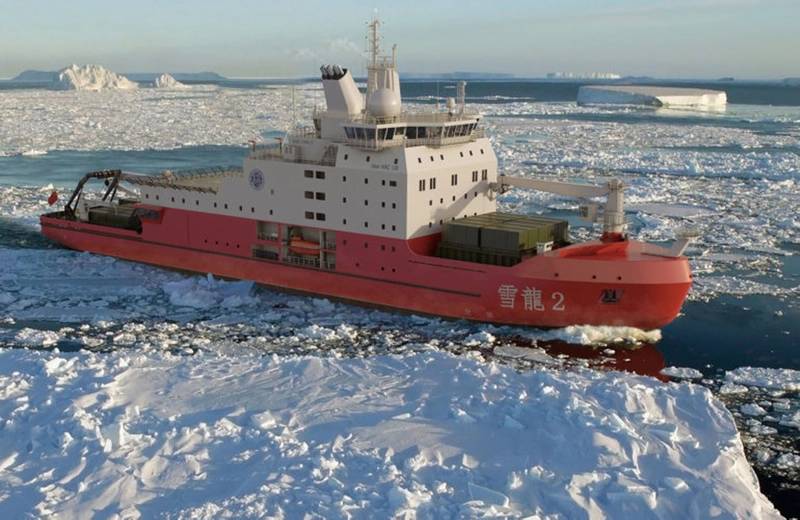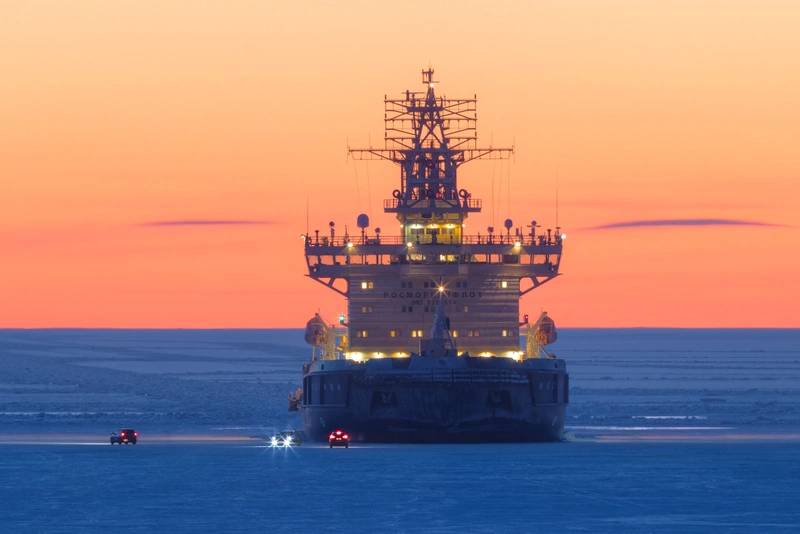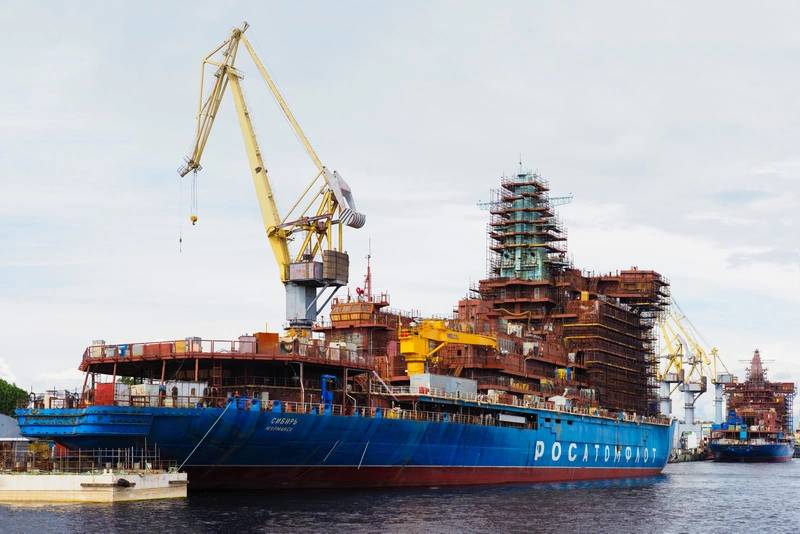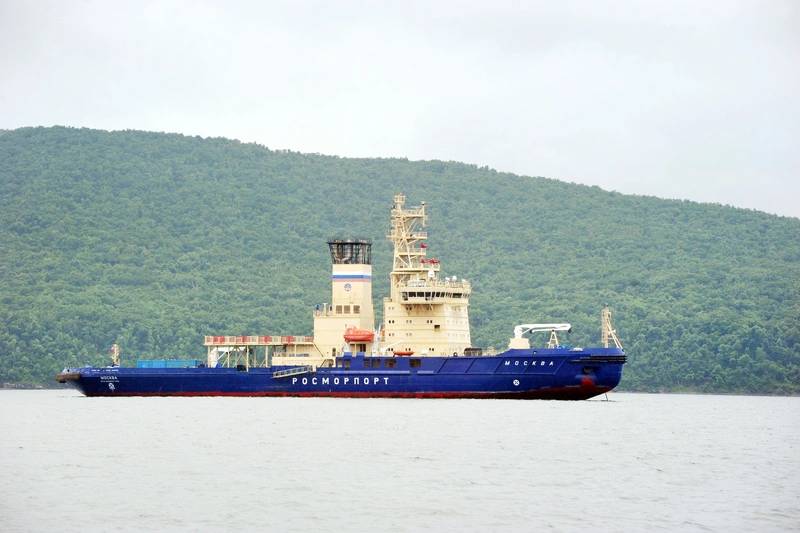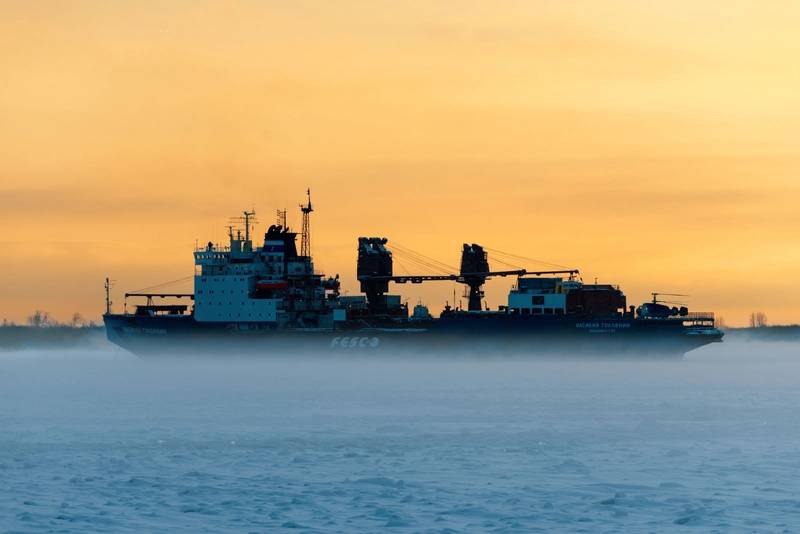Icebreakers
Heated Competition for Arctic Supremacy
Icebreaker Diplomacy
International collaboration like ICE Pact can help America build best-in-class icebreakers; bolster shipbuilding capacities and industries. But the question now: will politics and politicians get in the way?
By Edward Lundquist
Aker Arctic designed the Finnish icebreaker Polaris for the Finnish Transport Agency. The ship is powered by liquified natural gas. The 11,961-ton, 360-foot ship was completed in 2017 by Arctech Helsinki Shipyard.
Image courtesy Aker ArcticAmerica’s ability to operate in extreme high latitudes in the polar regions is hampered by a lack of icebreakers and ice capable ships. This is especially true for the Arctic, where the U.S. could find itself in a face-off with Russia or China.
Icebreaking is one of The U.S. Coast Guard’s 11 statutory missions, although it is capability and capacity constrained. It’s two functional polar icebreakers are old. A recapitalization effort is underway.
The Polar Security Cutter (PSC) program currently calls for three 22,900-ton, 460-foot icebreakers to be built at Bollinger Mississippi Shipyard in Pascagoula, Miss., but the program is already behind schedule and over budget. While new ships are coming, they can’t come soon enough, and the service needs more than three.
The Coast Guard currently operates two operational polar icebreakers--the 399-foot, 13,000-ton heavy icebreaker USCGC Polar Star (WAGB 10), commissioned in 1976, and the 420-foot, 16,000-ton medium icebreaker USCGC Healy (WAGB 20), which entered service in 1999.
Polar Star is one of the most powerful icebreakers in the world. She can break up to 21 feet of ice, or 6 feet of ice at a continuous speed of 3 knots. Polar Star is currently in Antarctica in support of Operation Deep Freeze 2025.
Polar Star’s sister ship, USCGC Polar Sea (WAGB 11), suffered catastrophic engine failure of her main propulsion diesel generators in 2010, and remained in a non-operational caretaker status until being towed last year to the Navy’s Inactive Ships Facility at Suisun Bay, California.
Healy is designed to break ice 4.5-feet thick continuously at 3 knots. She is the nation’s only icebreaker specifically designed to support Arctic research, provides high-latitude U.S. presence and scientific access to areas too challenging for most research vessels to reach. She recently returned to her homeport of Seattle in December after completing a 73-day Arctic deployment supporting scientific research missions, search and rescue operations, and training exercises in the region. On her way north, Healy suffered an electrical fire, forcing it to return to Seattle. After repairs, the ship redeployed in October. But the casualty underscores how little margin exists for the Coast Guard to accomplish its mission.
During her deployment, Healy conducted helicopter operations and search-and-rescue exercises with Joint Rescue Coordination Center Juneau (JRCC Juneau) and Coast Guard Air Station Kodiak, a vital capability to assist remote vessels and communities in Alaska.
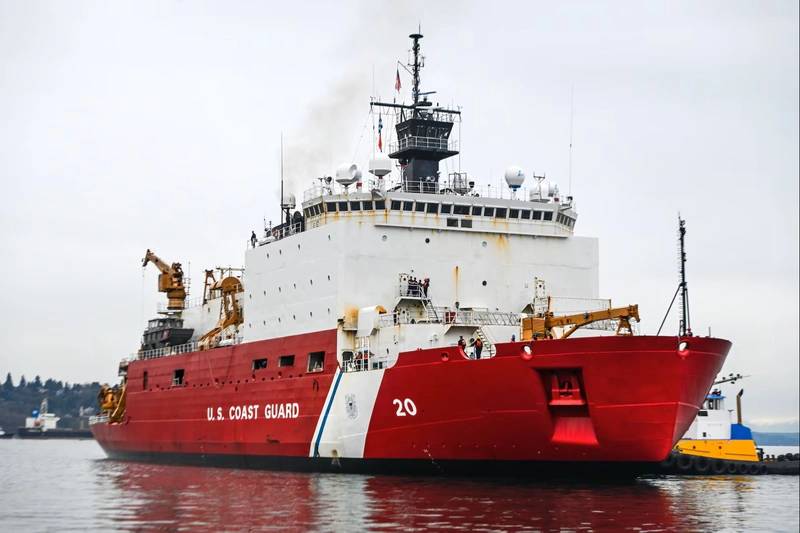
Bridging Strategy
For some time, Coast Guard leadership have said “the service needs six icebreakers, at least three of them heavy, and at least one of them right now.” A statement last summer stated that “The Coast Guard needs a mix of eight to nine polar icebreakers to meet operational needs in the polar regions.”
As a stopgap, last November the Coast Gurd acquired the Anchor Handling Tug Support Ship M/V Aiviq, a 360-foot U.S.-built polar class 3-equivalent icebreaker, from Offshore Service Vessels, LLC, of Cut Off, Louisiana. The ship has been renamed USCGC Storis (WAGB 21), painted in Coast Guard icebreaker red, and is undergoing modifications for military service at Tampa Ship LLC in Florida.
As a polar class 3-equivalent icebreaker, the future CGC Storis is expected to be capable of operating in waters that are otherwise inaccessible to most Coast Guard cutters. The Coast Guard intends to permanently homeport the vessel in Juneau, Alaska, and is planning infrastructure improvements to support future operations.
The service has emphasized that acquisition of a commercially available polar icebreaker does not affect the PSC program, and the vessel will not be included in the PSC program of record. A Coast Guard statement said, “The [Storis] will supplement these operational capabilities and provide much-needed operational presence in the near term as a bridging strategy to address maritime interests in support of national security until the full complement of PSCs is available.”
But when will the PSCs arrive? In a congressional hearing last November, Coast Guard and Maritime Transportation Subcommittee Chairman Daniel Webster (R-FL) talked about how the PSC program that was intended to deliver three new icebreakers beginning in 2024. “That timeline and the associated cost estimate were unrealistic, and the Coast Guard has yet to approve a final design for the vessel and is unable to provide Congress with a new timeline or a new cost estimate for the first vessel,” Webster said.
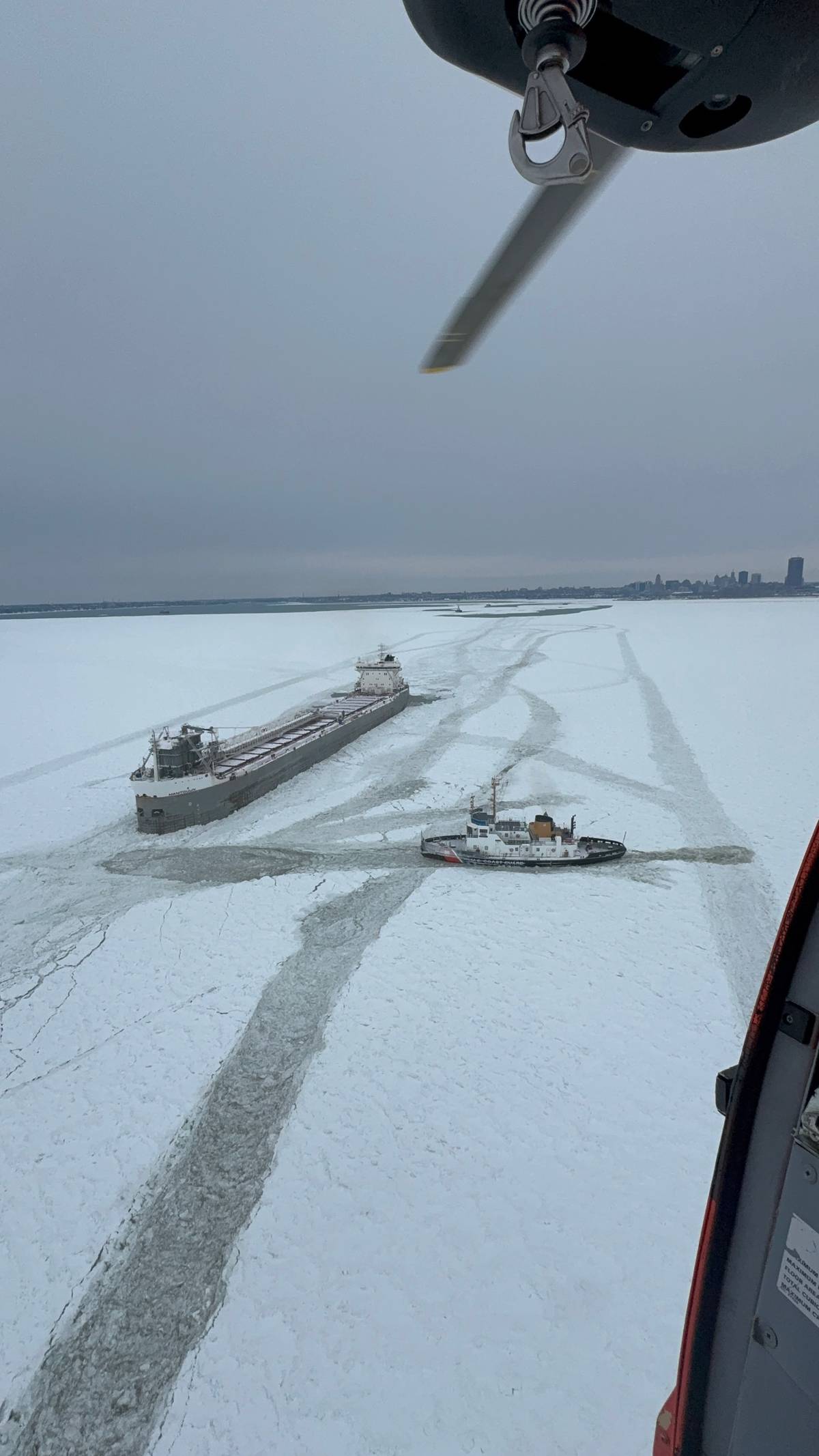
The first PSC, USCGC Polar Sentinel (WMSP-21), is not expected to enter service until 2030.
The National Science Foundation (NSF) is responsible for the U.S. research station in Antarctica, and relies on Coast Guard icebreakers to break open a channel for logistics ships to deliver fuel and supplies at McMurdo Sound each year. However, the icebreakers have been unreliable or unavailable, so NSF has had to resort to other means, such as commercial icebreakers or even Russian icebreakers. Two U.S.-flagged, ice-capable research vessels owned by Offshore Service Vessels LLC, and operated by Edison Chouest Offshore, Inc., the 6,200-ton, 308-foot icebreaking research vessel RVB Nathaniel B. Palmer and the 3,000-ton, 230-foot Antarctic Research and Supply Vessel (ARSV) Laurence M. Gould, have been used when the Coast Guard ships can’t support the mission. In 2008, NSF chartered the Swedish icebreaker Oden from Swedish Research Council to resupply the McMurdo base. In 2011, NSF contracted with Murmansk Shipping Company to have the 7,000-ton, 289-foot Vladimir Ignatyuk break the channel for the resupply mission.
The U.S. has built two icebreakers in the last 20 years. Fincantieri Marinette Marine delivered the Great Lakes Icebreaker (GLIB) USCGC Mackinaw (WLBB 30) to the Coast Guard in 2006. The same yard built the 3,665-ton, 261-foot RV Sikuliaq, which is actually an ice-capable research ship, in 2014. Sikuliaq is owned by NSF and operated by the University of Alaska Fairbanks College of Fisheries and Ocean Sciences.
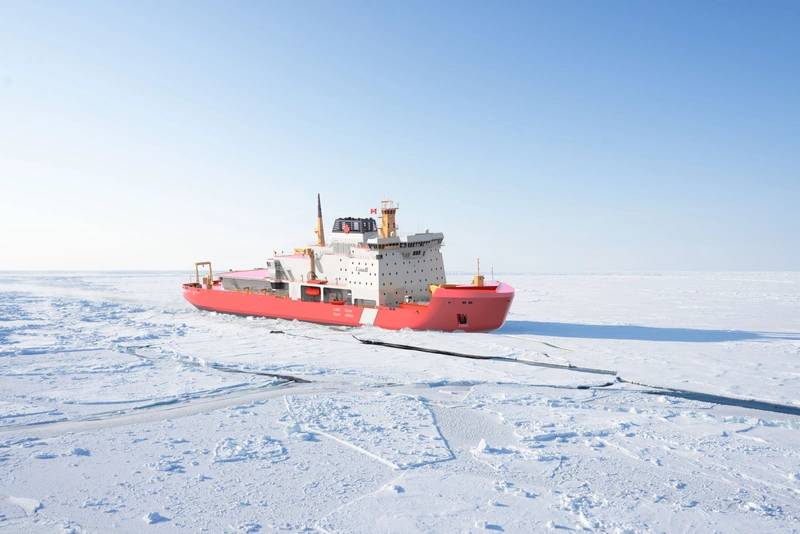
ICE Pact
To help the U.S. achieve its icebreaking ambitions, it entered into a formal partnership with Finland and Canada called the Icebreaker Collaboration Effort (ICE Pact), to leverage the expertise and capabilities of all three countries, and build best-in-class Arctic and polar icebreakers and other Arctic and polar capabilities. It is somewhat similar to the trilateral AUKUS agreement arrangement between Australia, the UK, and the US. to help Australia acquire nuclear submarines.
The agreement was signed at the NATO summit in Washington last July. ICE Pact acknowledges that America’s highly capable allies in Canada and Finland have more experience designing, building and operating icebreakers, and so seeks to collaborate with them. But the fact that it was signed by then-President Joe Biden for the U.S. may mean the agreement is doomed. In fact, just hours after Donald Trump’s inauguration on Jan. 20, both the Department of Homeland Security and White House ICE Pact web pages were taken down.
In January, Trump called for 40 or more icebreakers. “Big ones,” he said. And, he added, “We don’t need a partner.”
Last July, Bollinger Shipyards, which is on contract for the Polar Security Cutter, praised the new initiative and said the company will play a “critical role” in the ICE Pact.
Bollinger has invested more than $40 million in upgrades to its Pascagoula facility’s infrastructure, technology, and personnel to establish a Center of Excellence in building world-class icebreakers.
Acquiring new icebreakers is a priority for the Canadian Coast Guard (CCG). Two yards are building icebreakers under Canada’s National Shipbuilding Strategy (NSS), a plan to rejuvenate Canada’s capability and capacity to design and build complex ships for the Coast Guard, Fisheries Service and Navy.
Seaspan in North Vancouver, B.C. and Chantier Davie in Lévis, Quebec, have contracts to build icebreakers for the Canadian Coast Guard (CCG) as part of the NSS.
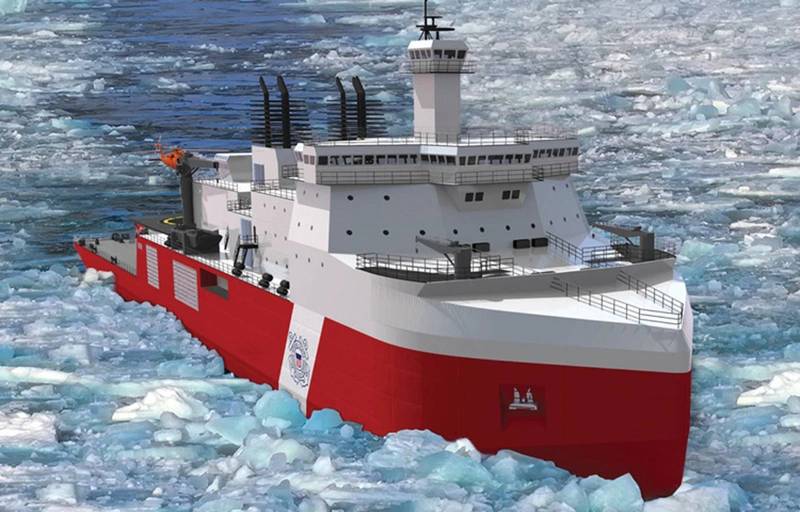
According to a Seaspan July 2024 statement, “Seaspan is tasked with designing, building and delivering 21 icebreaker vessels for the Canadian Coast Guard (CCG). As of today, we have already delivered three icebreaker vessels, and a fourth will be delivered early next year. We are currently well into the design of a heavy Polar icebreaker that will provide year-round operations across the entire Canadian Arctic. Construction of that vessel will start later this year. We are also well into the design of 16 additional medium icebreaker vessels that will be built and delivered over the next 10-20 years.”
“Through the strategic foresight of Canada and the Canadian Coast Guard, a world-class icebreaker design and build capability already exists in Canada and can be leveraged for ICE,” said Seaspan Shipyards CEO John McCarthy. “In fact, we have had strategic relationships with Finnish partners several years on the design of our icebreaker vessels. We are happy to continue this collaboration on expertise and construction capacity with our ICE Pact allies as they seek to boost their Arctic naval capabilities, and project sovereign authority over their respective Arctic territories,” McCarthy added.
“Agreements like the ‘ICE Pact’ that coalesce expertise and construction capacity will help additional allied nations secure better icebreaking vessels.” McCarthy said.
In March of 2024, Canada awarded Chantier Davie a contract to build a heavy icebreaker, and design the six-ship fleet of Canada’s future Program Icebreakers for the Canadian Coast Guard, along with two ice-capable ferries.
A Canadian Government statement states that the Program Icebreakers will “replace the heavy and medium icebreakers of the Canadian Coast Guard (CCG) that operate in Atlantic Canada, the St. Lawrence waterways, the Great Lakes and Pacific Canada during the winter, and in the Arctic during the summer; provide aids to navigation, search and rescue, environmental response, northern resupply missions and vessel traffic services to fulfill obligations of the CCG under the Canada Shipping Act; and be used to exercise Canada’s Arctic sovereignty as part of Canada’s increasingly rigorous security requirements in Arctic waters, which are becoming more accessible due to climate change.”
To bolster is icebreaker credentials, Chantier Davie purchased Helsinki Shipyard in Finland from its previous Russian owners, who were subject to sanctions. The Helsinki Shipyard has built more icebreakers than any other yard. Davie is also in negotiations to buy or invest in a U.S. shipyard, presumably to leverage their expertise and capability to compete for U.S. icebreaker construction contracts.
It will take some time to recapitalize Canada’s icebreaker fleet. In the meantime, the CCG purchased three icebreaking anchor handling tugs from Viking Supply that had been laid up in Norway. The 276-foot 3,400-ton CCGS Vincent Massey, CCGS Captain Molly Kool, and CCGS Jean Goodwill were upgraded for CCG service at Chantier Davie.
The Finnish government boasts that the country designs 80 percent of the world’s icebreakers and manufactures 60 percent of them.
“This hard-earned knowledge has made Finland a global authority in the icebreaker industry and it now seeks to share its know-how via the ICE Pact,” according to a November 2024 report by the Wilson Institute.
The report by Jason C. Moyer and Rickard Lindholm states that:
• “Finland’s shipyards have the capacity to produce icebreakers quickly and at a reasonable cost. It is estimated that, compared to US icebreaker production underway, the average Finnish icebreaker would cost about a fifth of the price and be completed in about 24 months after a contract is signed, in part due to the ecosystem developed around the shipyards and close coordination with the Finnish government.”
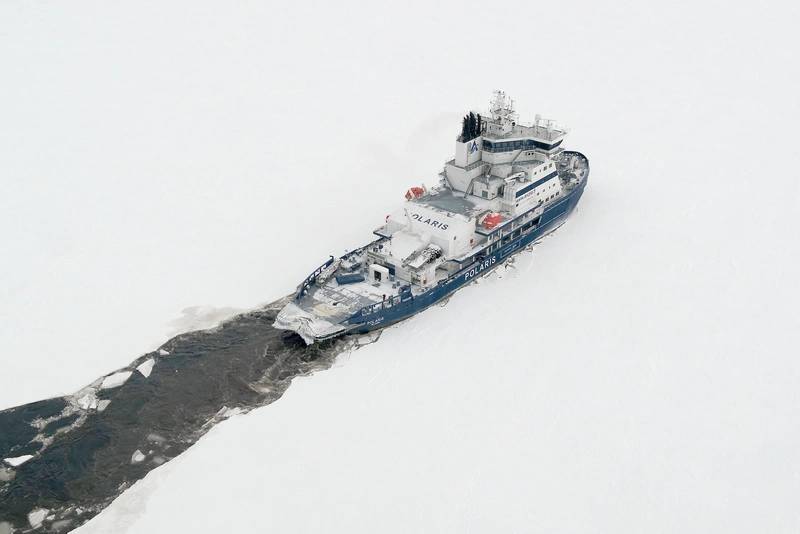
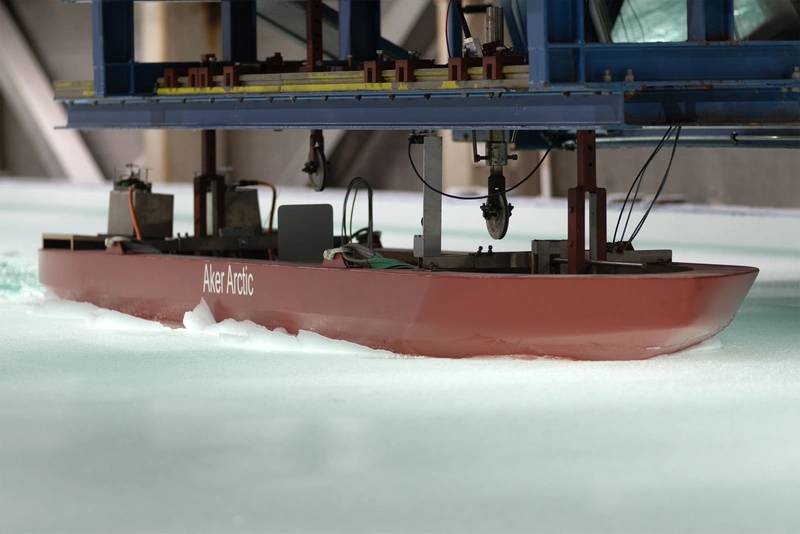
Aker Arctic of Helsinki, Finland, develops and designs icebreakers and icebreaking vessels. The company hopes to get business as a result of ICE Pact, but has no official role in the government-to-government cooperation.
Mika Hovilainen, managing director and CEO of Aker Arctic said Finland has a high national interest to icebreakers. “Finnish foreign trade happens by sea. All of our ports will freeze in normal winter and most of them will freeze up even in mild winter conditions. Icebreakers are required to keep shipping lanes open and trade functional. We are only country in the world whose trade is heavily depending on icebreakers.”
The Finns have built a huge number of icebreakers--including several series of polar icebreakers--and ice-capable cargo ships for the Soviet Union, and later Russia. “The foundation for Finnish know-how of icebreakers were built from these two main motivations – own demand and Soviet trade,” said Hovilainen. “After separating icebreaking knowledge from the Finnish Shipbuilding industry into the independent company Aker Arctic in 2005, we have accelerated technology development.”
Aker Arctic’s test tank in Helsinki can emulate all types of sea and ice conditions. Model testing in the 246 foot-long and 26-foot-wide tank—with bottom and side viewing windows--can visualize how the hull form and propulsion interacts with ice in different ice conditions.
Finland leads the way in icebreaking innovation. Finland’s newest icebreaker, the 11,00-ton, 360-foot Polaris is powered by liquified natural gas (LNG), and fitted with three azimuth propulsion units, where one is located in the bow. “This new propulsion configuration where we have two azimuths in stern and one in the bow has changed escort icebreaker efficiency to totally new level,” Hovilainen said.
Cooperation vs. competition
President Trump hasn’t always been against teaming up. Trump and Finland’s President Sauli Niinistö discussed cooperation on icebreaker construction during an October 2019 meeting. ICE Pact insiders hope the incoming Trump team will keep the ICE Pact and fully exploit it.
One of the justifications for ICE Pact has been the competition for influence in the region posed by Russia and China. Russia is the undisputed leader in icebreakers. An official Russian statement from February 2024 said that the national icebreaking fleet “currently includes 41 icebreakers, including 34 diesel-electric and 7 nuclear.” In addition, FSUE Rosmorport, the Federal agency of maritime and river transportation operates 34 icebreakers.
China, describing itself as a “near-Arctic power,” seeks to extend its “Silk Road” into the Arctic as a shortcut to Europe and to gain access to the resources in the High North. The flagship of China’s icebreaker fleet, the 401-foot, 14,300-ton icebreaking research ship Xue Long II, was completed in 2019. Last July, it sent three icebreakers to the Arctic, demonstrating its resolve to be a player in the polar regions.
The U.S. icebreakers can only be in one place at a time. And the Arctic is a vast ocean. Without reliable ships that meet commitments, the U.S. cannot assure its sovereignty in the Arctic.
In a congressional hearing in November 2024, Coast Guard Deputy Commandant for Operations Vice Adm. Peter Gautier, said the challenges in the region were mounting, and the U.S. would be at risk without these new icebreakers. “I acknowledge we have a national security threat now from the increased threat of competitors who are working together in ways we have not seen.”
Icebreakers are complex and expensive ships. They are indispensable for an Arctic nation like the U.S. America can benefit from the knowledge and expertise of its ICE Pact partners, and do so in a way that benefits the range of stakeholders in the U.S., as well as Canada and Finland.
